Finding inspiration in the ever-blooming variety of textures and colours in her Seattle-based urban farm, Sarah creates and teaches lush Watercolours inspired by the diverse variety of herbs, flowers, and trees grown in her garden.
With a continually blooming following of botanical and art lovers alike, her teaching has received worldwide attention with her online painting courses in the International Watercolor Summit, her monthly live online teaching sessions and her three best-selling books with Penguin Random House. Sarah has taught thousands of people how to watercolour and with her teaching talents, has made it such an approachable and enjoyable art form, both for the experienced and novice alike.
Sarah loves using Hahnemühle The Collection and shares this lovely paper with every student who attends her classes – it’s her favorite!
I love Hahnemühle Collection cold press. It’s the right density to withstand my brush and thoughts. The timing that the quality of the cotton gives me is ample and generous. It feels decadent and like an absolute treat watching a quality paper respond to my paintbrush.
She is always saying that watercolour feels like a dance between the artist and her tools. And in watercolour, the tool that will make the most difference in your piece is your paper. Because Hahnemühle The Collection watercolour paper is 100% Cotton, it makes for the very smoothest pull on the brush. It has water absorption and superior colour lifting. Sarah loves painting on Hahnemühle and considers it such a luxury of a paper!
We are happy that we could get Sarah for an inspiring and informing interview. Enjoy reading about how she became an artist, her professional carrer and much more great tips and hints about botanical watercolour painting from this charismatic artist.
When did you discover your passion for art and why do you mostly focus on floral motives?
I have always been a creative. I always had to be doing something with my hands – it’s when I feel the most like ME.
But, like most people, I started on a typical, expected, safe career path. I have a degree in Economics from the University of Washington and I had a wonderful budding career working in Human Resources with a large tech firm, first in London England, and then in Seattle, Washington. Like the economy does, jobs ebb and flow, so I had to think about a career change and after an injury sidelined me from the regular roles, I was able to seize an opportunity to spread my creative wings. I found my calling in botanical watercolors, sharing my passion and my methods in my best-selling book and worldwide workshops.
Painting botanicals was a natural choice for me, mainly because I have loved flowers as long as I have loved color and light and paint. I don’t know if I will ever, ever be over botanicals. There is something about the way the light hits a flower that takes my breath away. Like Monet and his lilies — he just painted them over and over and over. No two leaves in the garden are the same. An angle of a petal, or the way a flower changes from minute to minute – there is something about capturing that moment that is so appealing to me.
Which of your projects/motifs opened the door that you started your professional career as an artist? Or what was the moment when you knew now I’ll become an professional artist?
I’ve been drawing, painting and crafting my entire life, but once I made the transition to Watercolor from Acrylic and Gouache (mainly because Watercolor is an incredible medium) I discovered a passion that really stuck with me. You can reactivate it with water whenever you’re ready. You can create amazing color mixtures with different paints and then let it dry on your plate palette. Then come back a year, or an hour, later and by simply adding water you’re able to reactivate the paint. So you can just pick up where you left off, and that’s magic.
I began @TheMintGardener—an Etsy shop and Instagram account—in 2014. My name, TheMintGardener, has a funny story behind it. My favorite
thing to do in the garden was to throw seeds in the general direction of dirt, and then see what came up in a few months. Mint was a favorite of mine because it was vibrantly successful. It flourished wherever it landed: in shade or sun, with little need for water and no need for fertilizing. Being a “Mint Gardener” was a bit of a laugh between my husband and I, since it didn’t take much in the way of my effort to make a successful Mint bed. I felt more confident sharing plants and flowers…and maybe one day I would post some of my art pieces. Maybe.
So, I began slowly, sharing simple posts about our garden. It was a way for me to tap into the outside world, a place where I could be Sarah—not someone’s wife or mother. As time passed, I received encouragement from so many family members and friends. They believed in me—that I was indeed an artist, both in my garden and with my brush.
So, the time finally arrived to share my artwork with the wider world. Up until now, I had been only sharing pictures of my plants. I knew I needed to share my art too. The day began early, around five in the morning. I had just fed my two-month old daughter and she was snoozing contentedly. Instead of rolling back into bed, I sat in the living room at my great-grandmother’s writing desk. I watched the sun rise, captivated by the soft morning light as the breeze shook the leaves of the trees. Inspired, I watercolor painted a few monochromatic green leaves. Suddenly, I felt that someone needed to hold the plant I had just painted. In those quiet hours, my character “Florence” was born. She came to life, embracing leafy eucalyptus boughs in a large vase, her face hidden by the greenery. I loved the contrast of the watercolor plant with the simple, ink lines of her body. Next, I drew Florence holding one of our chickens. I knew I had to share her, but I still remember the vulnerability I felt as I hit “post,” sharing a piece I cared about with an audience for the first time.
It’s hard to express in words the joy that I have experienced because I chose to paint and share my art. And I still feel vulnerable, with flickering feelings of fear when I share a new post or do a show or pop-up shop. But still, I show up, because my goodness, feeling uncomfortable is well worth the reward of sharing what I love to do.
What is most challenging about being a professional artist?
I think its finding balance between creating art for work, and for pleasure. When you make art for commissions that pay the bills, you are often creating something for someone else: bringing life to someone else’s dream. It takes more work, BUT it’s very satisfying when it’s done. Remembering to create for MYSELF to recharge is important in the in-between times, because that gives me the creative fuel I need to go back to commissions. Finding balance in all walks of life is the biggest challenge I think, and art is no different
Do you have any advice on what young artists should look out for, if they want to start a professional artist career?
Work hard, share everything and keep going. Don’t compare your work, or your journey, to another’s. Each work, each journey, each artist – we all have different paths to follow that will be an unique as our fingerprints.
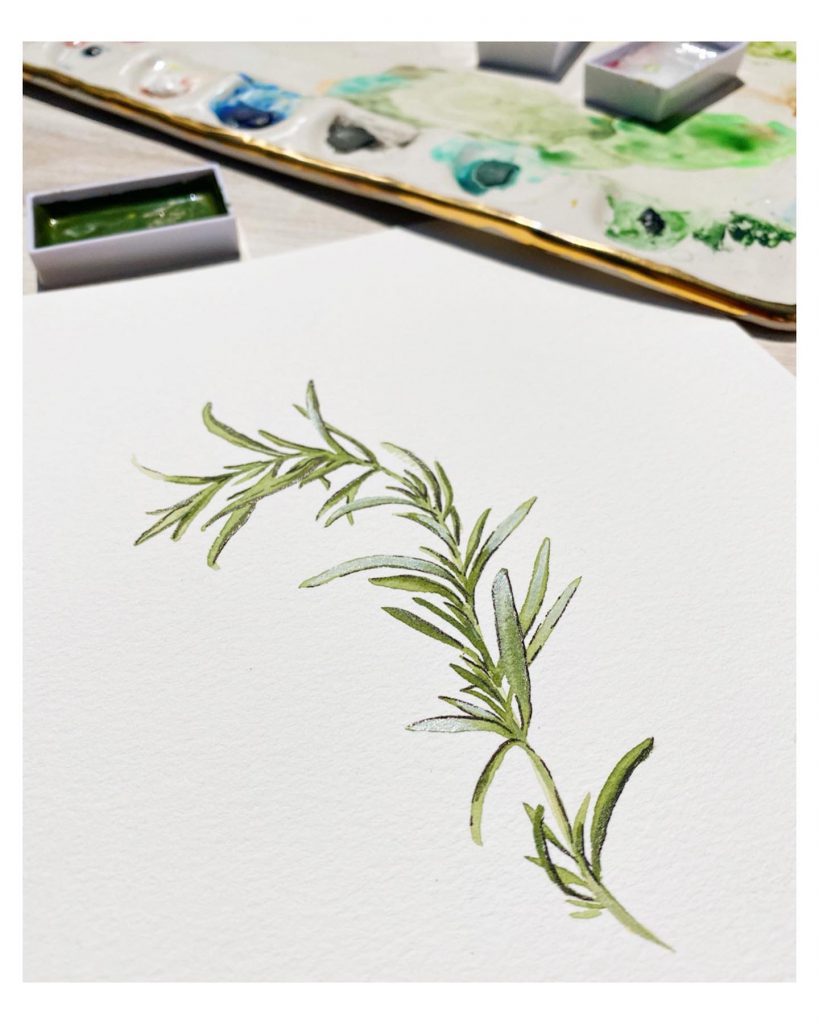
How important is the paper choice for your works of art? As you say the Collection is your favorite paper, what is the difference to others?
The right paper is the most important tool of my trade. I consider Paper to be my most essential partner in the daily watercolor dance. The paint and water don’t sing and move unless the paper is just right. I love Hahnemühle Collection cold press. It’s the right density to withstand my brush and thoughts. The timing that the quality of the cotton gives me is ample and generous. It feels decadent and like an absolute treat watching a quality paper respond to my paintbrush.
Do you use the cold pressed, rough or hot pressed surface?
I actually love ALL of the different surfaces, and use them for different things in Watercolor. For commissions that need to be scanned for packaging, hot press works best because the lack of tooth allows for easy digital clean up.
Cold press is what I use most of the time, and is my favorite to use for my students in my classes. It’s approachable, workable and makes the foundational skills of watercolor very easy to translate with their brushes.
And rough press is incredible. The tooth on this paper adds a dynamic edge to my botanicals – almost like the paper has a say in the piece, all its own. There’s an artistic unpredictability to it, just like using granulating watercolor paints, and when combined with water and allowed to move – it just makes my pieces shine!
Do you have a dream project you would like to realize sometime?
Portraits. One day, portraits.
What’s next?
Another book is in the works, to follow my newest title : “Watercolor Workbook.” I’m working on a line of dishes for Fall 2022 with a lovely company, more packaging design with Good Dirt and a children’s clothing line in the Spring of 2021 with Burrow and Bee. Also, I’ve been so fortunate to work with Blick Art Materials as a Featured Artist there, and there’s always a few projects in the works!
Thanks for the time and this inspiring talk, Sarah!


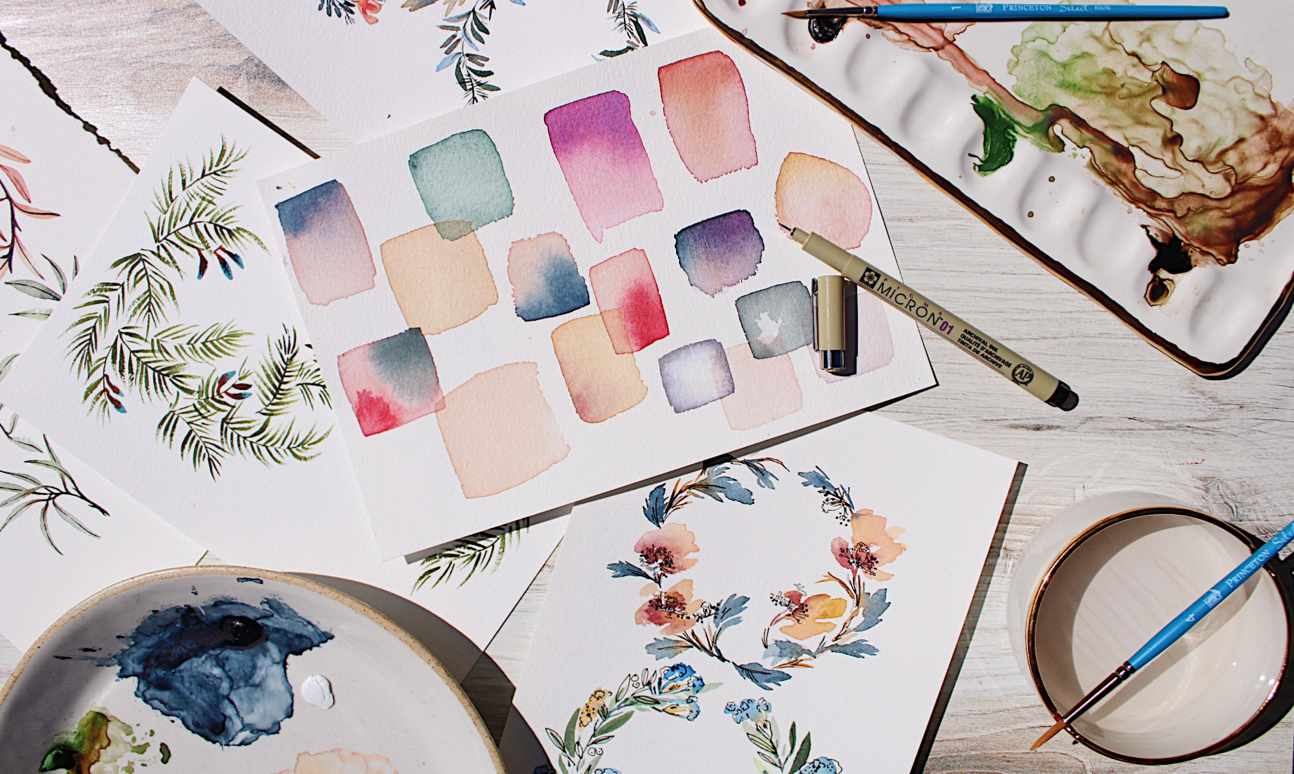
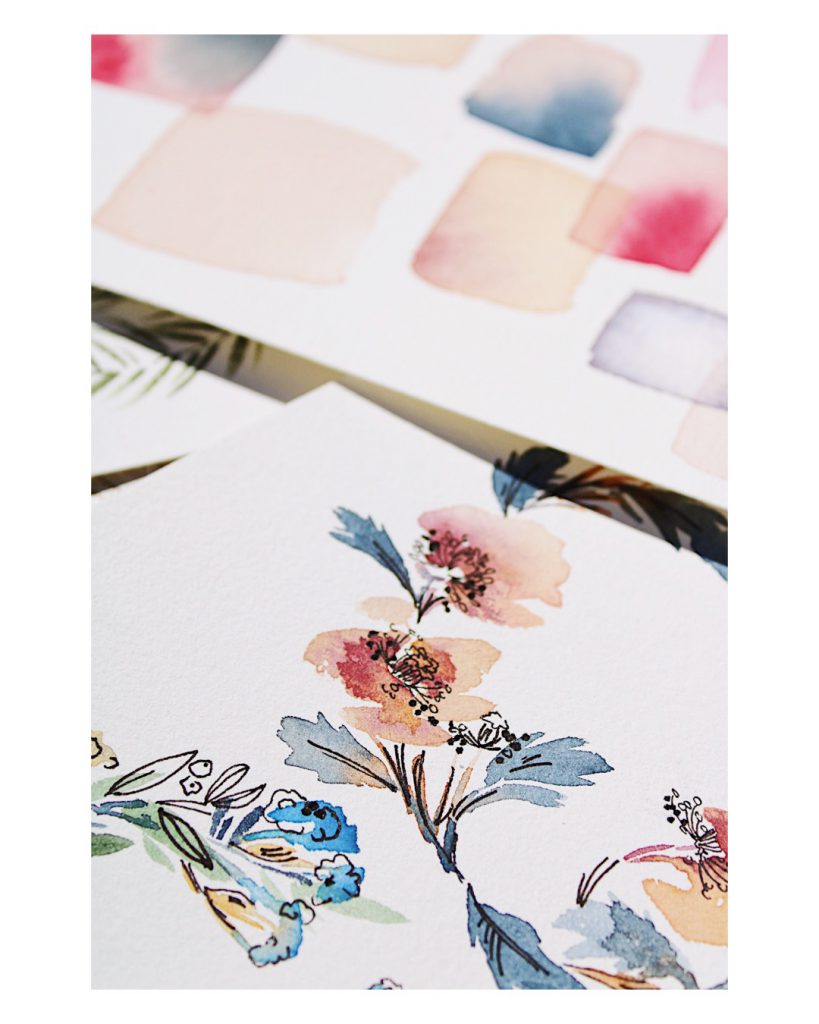
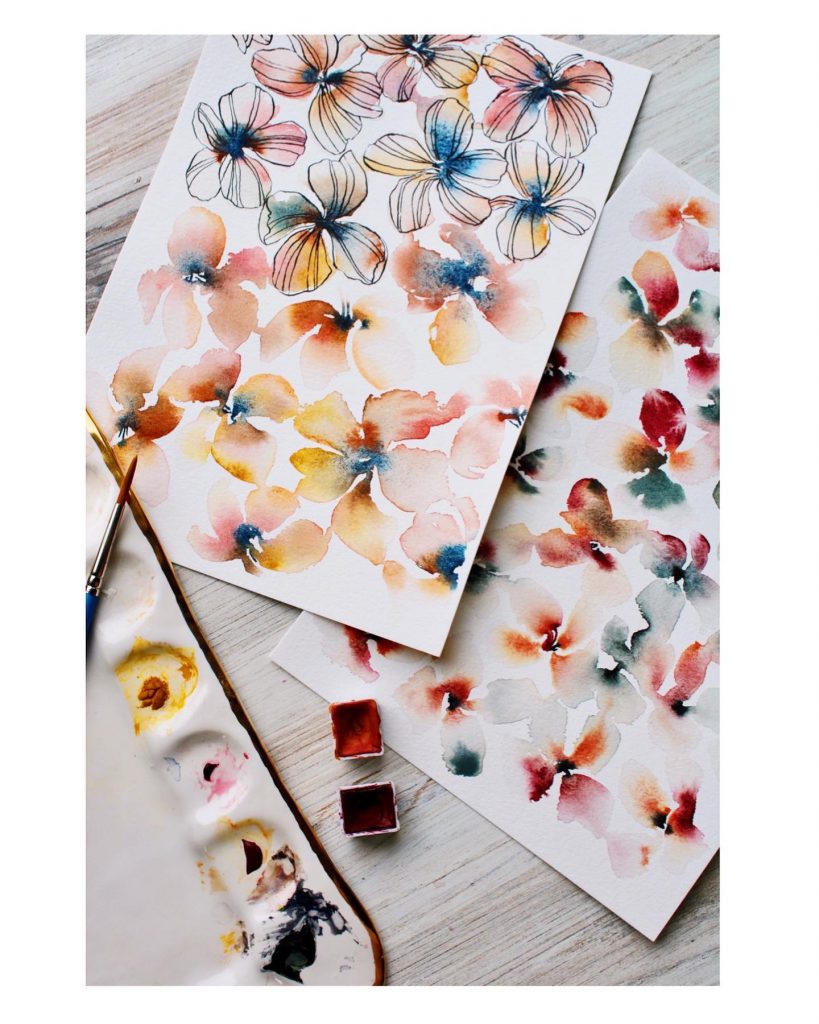
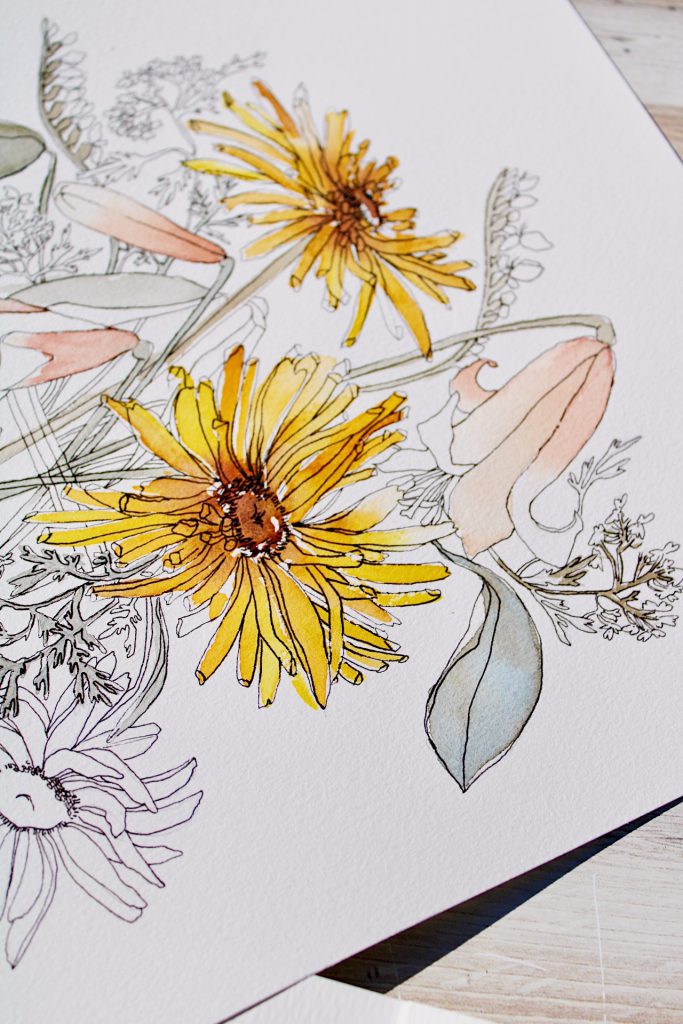
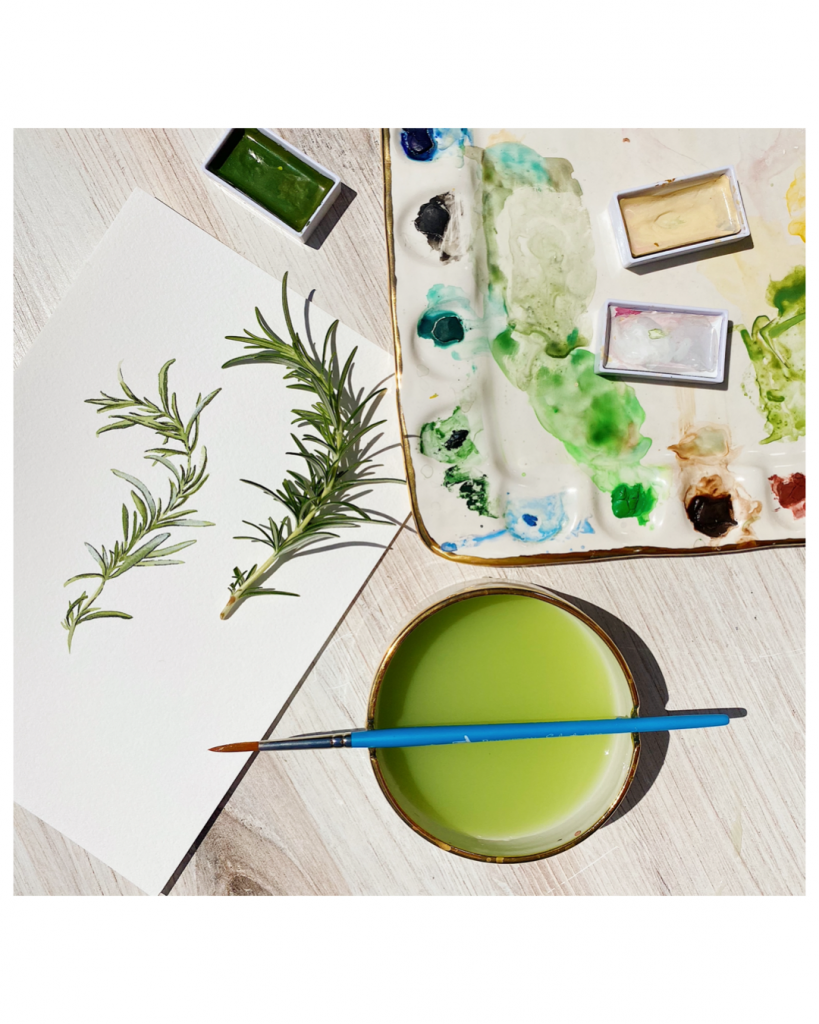
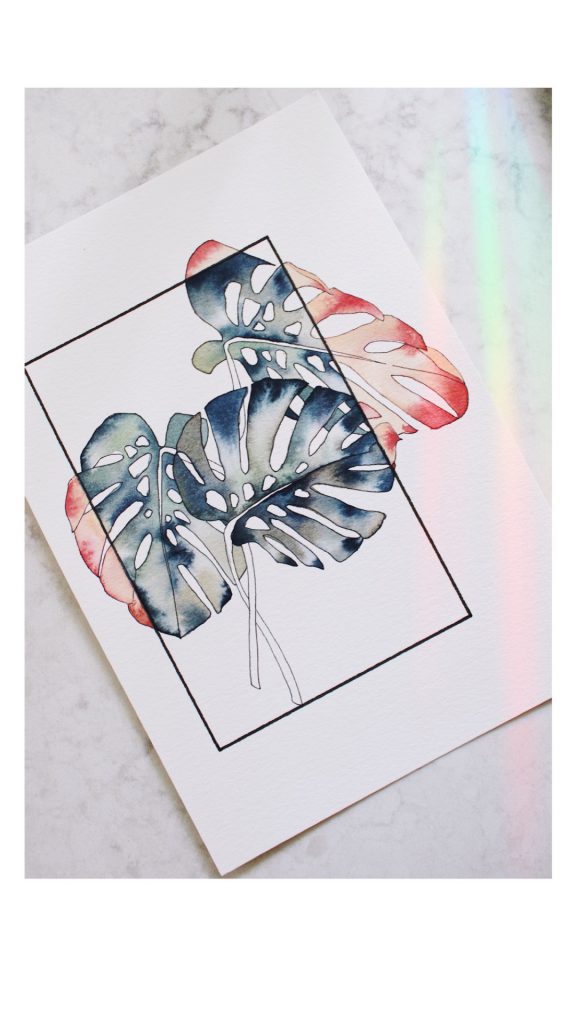
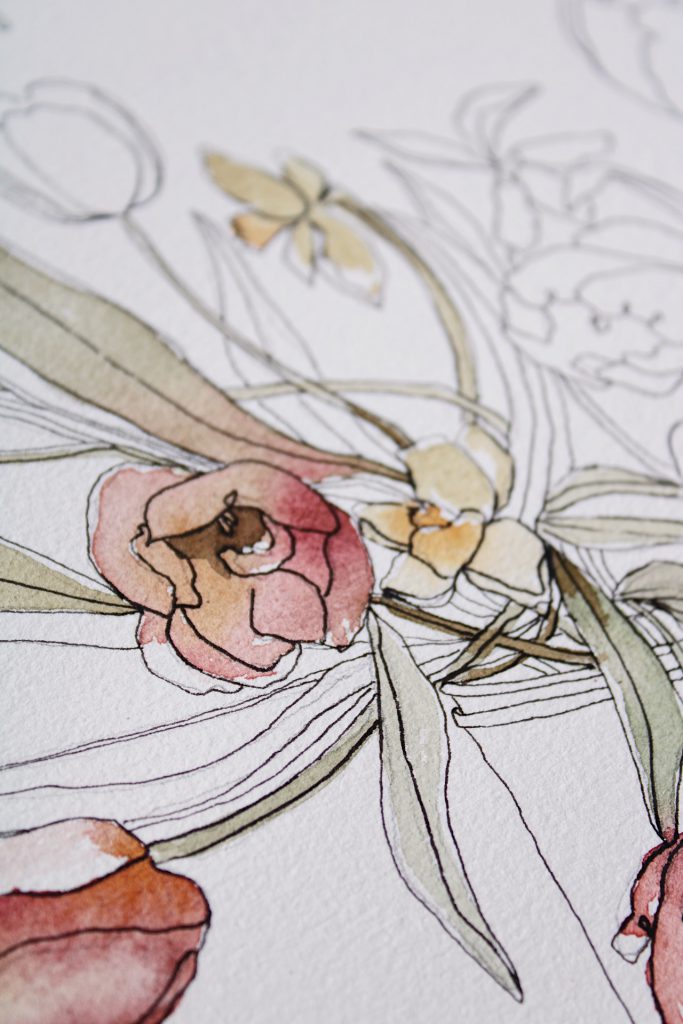







A wonderful read of a inspirational artist.